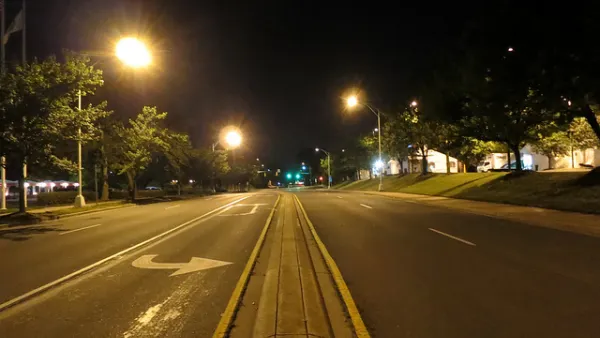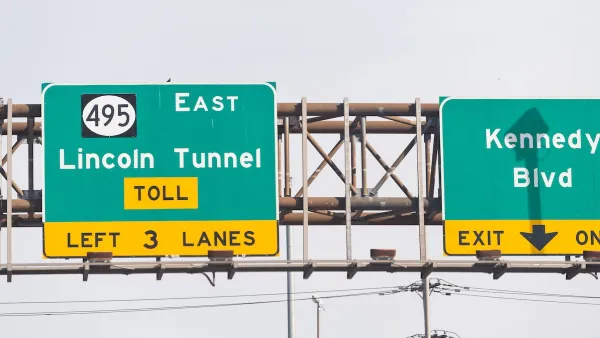Comparing wide versus narrow lanes, Kenneth A. Small and Chen Feng Ng examine the relatively unexplored design of building more compact roads to alleviate traffic congestion.
The U.S. Interstate Highway System has strict design standards that theoretically provide safe travel at high speeds, but only off-peak drivers have the opportunity to travel at high speed on these expressways. Small and Ng say, "But suppose we can design new roads, or reconfigure existing roads, to have lower speeds, neighborhood-friendly footprints, and higher capacity." For example, the standard 12-foot-wide lane is considered safe for mixed traffic at high speeds, but Small and Ng propose a road of the same total width with narrower lanes and shoulders. This would allow for more lanes to increase capacity, which means peak travelers can drive faster.
Small and Ng take a closer look at wide versus narrow lanes by comparing Expressway R of Interstate standards with Expressway C of a more compact design. They find that R has a higher free-flow speed (65.5 mph) than C (60.4 mph) under light traffic conditions, but as traffic volume increases, the decline in speed occurs more quickly on R with its fewer lanes. This was the same result when measuring average travel times. "Repeating these calculations at different traffic levels and peak-to-off-peak ratios," confirm Small and Ng, "we find the compact design performs better under all conditions in which there is appreciable queuing." The reason is that compact design depends on traffic volume, whereas regular design depends on free-flow speeds.
As for safety considerations, "it is uncertain whether the compact road design will reduce or increase safety." Wider lanes are generally regarded as safer because they provide leeway if drivers wander from their lane or swerve to avoid an accident, but there is no strong empirical evidence. "The most important factor is likely the speed chosen by drivers, which suggests a policy response," say Small and Ng. "reduce the speed limits on compact roads and add other measures to discourage speeding."
FULL STORY: When Do Slower Roads Provide Faster Travel?

Analysis: Cybertruck Fatality Rate Far Exceeds That of Ford Pinto
The Tesla Cybertruck was recalled seven times last year.

National Parks Layoffs Will Cause Communities to Lose Billions
Thousands of essential park workers were laid off this week, just before the busy spring break season.

Retro-silient?: America’s First “Eco-burb,” The Woodlands Turns 50
A master-planned community north of Houston offers lessons on green infrastructure and resilient design, but falls short of its founder’s lofty affordability and walkability goals.

Test News Post 1
This is a summary

Analysis: Cybertruck Fatality Rate Far Exceeds That of Ford Pinto
The Tesla Cybertruck was recalled seven times last year.

Test News Headline 46
Test for the image on the front page.
Urban Design for Planners 1: Software Tools
This six-course series explores essential urban design concepts using open source software and equips planners with the tools they need to participate fully in the urban design process.
Planning for Universal Design
Learn the tools for implementing Universal Design in planning regulations.
EMC Planning Group, Inc.
Planetizen
Planetizen
Mpact (formerly Rail~Volution)
Great Falls Development Authority, Inc.
HUDs Office of Policy Development and Research
NYU Wagner Graduate School of Public Service



























